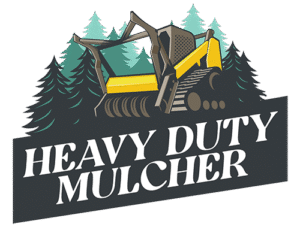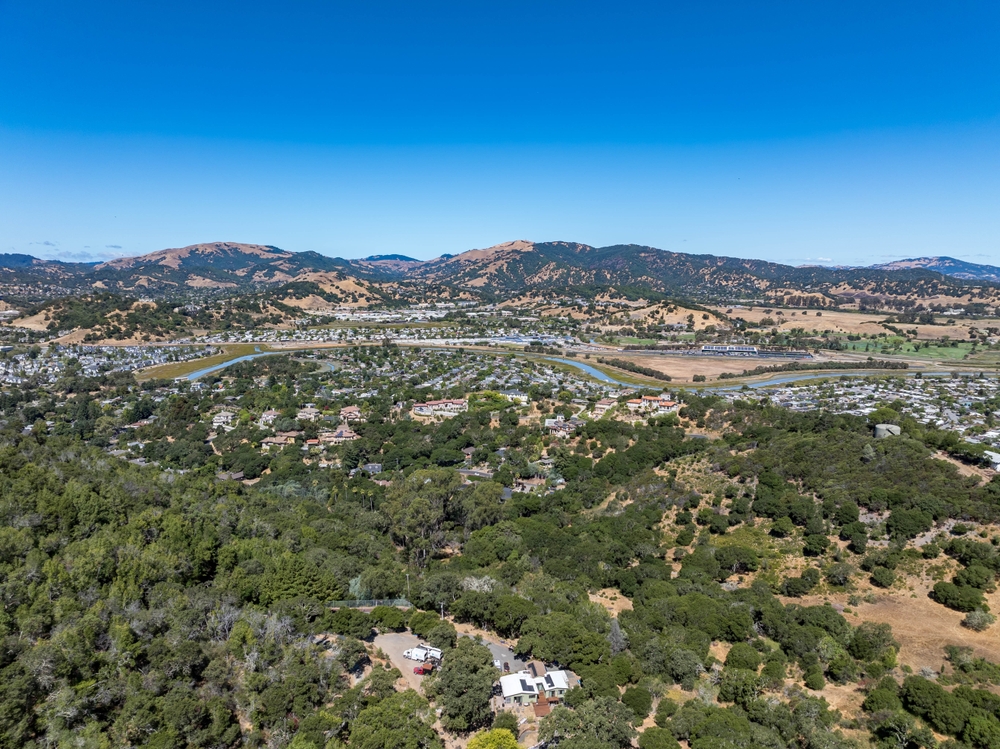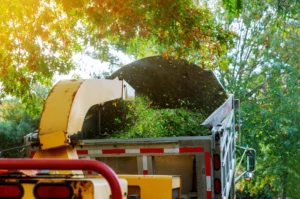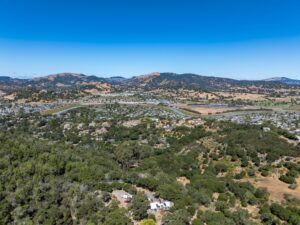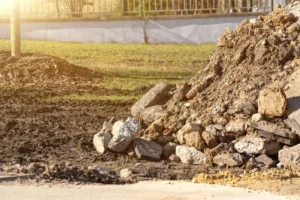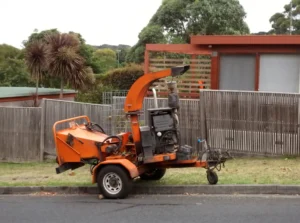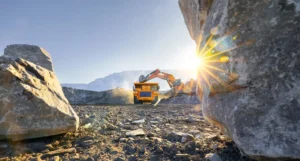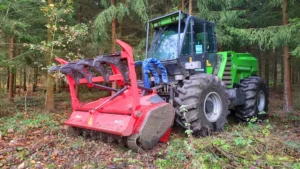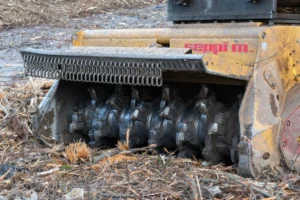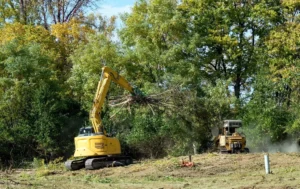Land coverage is not a sprint, it is a rhythm, and the way you plan rows, set bite, and shape discharge decides how many clean acres you hand over at the end of the day. A mulcher that drifts from pass to pass wastes fuel, piles chips in the wrong places, and leaves fuzzy strips that force a return, while a machine guided by strategic mulcher cutting patterns moves with purpose, keeps the rotor in a steady zone, and uses every gallon for production rather than for heat.
The aim here is simple, give operators and planners a working playbook that turns a mixed site into a set of repeatable moves, choose a starting edge that sets the tone for the whole block, use overlap rules that erase the last pass without re cutting half the row, and pick return paths that do not bury your own sightlines.
When this rhythm holds for a full shift, acres rise, fatigue falls, and maintenance stays ahead of the work instead of chasing it.
Planning patterns for different site conditions
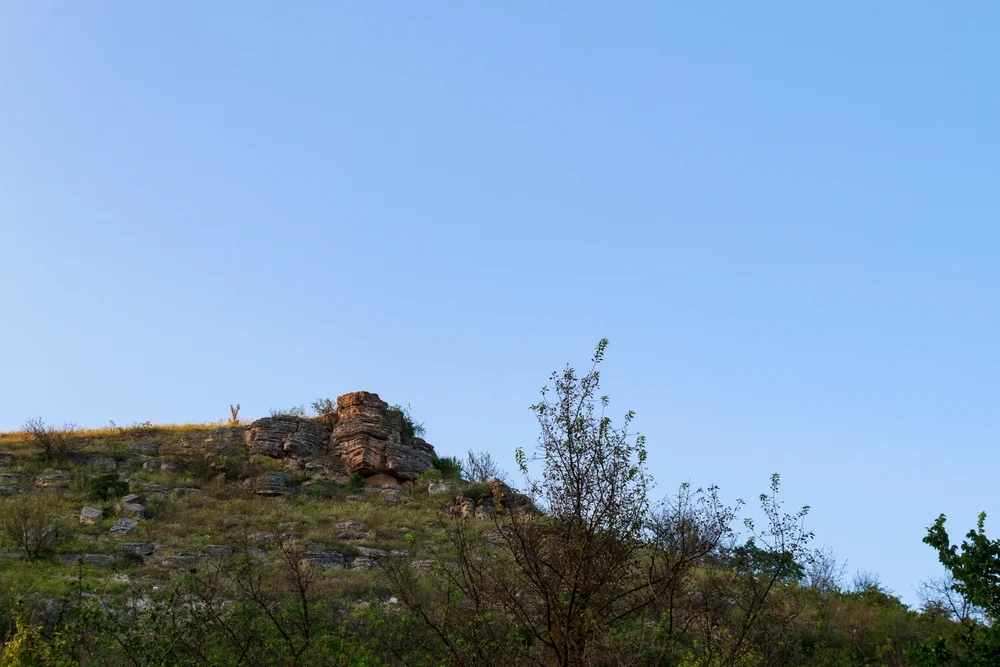
Pattern planning begins before the first bite, because the map of your site dictates how straight rows will flow, where chips should fall, and how often you will be forced to pause or reset. Walk or scan the ground for slope breaks, soft patches, wind lanes, and public edges, then choose an entry that lets chips fall down and away from your return, not into it. In a wide block, that may be a long straight pass parallel to wind, in a tight area near a road, that may be a short contour pass that keeps throw inside the buffer.
Formalize this into a one page plan, write the baseline bite, the default overlap, and the return rule where operators see it, and you will turn a guess into a habit that repeats from row to row. If your calendar includes block work that spans mixed species, trail interfaces, and seasonal moisture, study how crews stage machines and organize rows inside broad forestry operations programs, then align your pattern notes to that larger production flow so the head and the site plan work together. See the overview at forestry operations.
Baseline mapping and starting edge
A good starting edge saves hours, because it sets a clean line, sets a safe throw direction, and gives the operator a simple rule for returns. Begin by sketching the block as two zones, an open zone where straight lines win, and a constraint zone where edges, posts, or slopes require contour work. In the open zone, run long parallel rows that match wind and ground fall so chips settle where they help, not where they hide sightlines. In the constraint zone, shorten rows and reduce bite so chip throw stays tight and the door never crowds the edge. Keep one principle in front of the operator at all times, finish the row once, do not drive back into your own discharge, and do not cross the line you just cleaned unless you plan to erase your own footprints.
Linear work demands an even stricter approach, because a small drift in the first hour becomes a long snake by noon. When you build patterns for poles, fences, and lines, take your baseline from crews who live on long tight alignments, and copy their habit of marking a start point, a reference headland, and a standard return. That discipline shows up in clean spans, consistent overlap, and a finish that does not need a second pass. For practical staging and pass design that keeps these rows straight from the first tower to the last, review the methods used in utility corridor clearing and adapt them to your corridor width and vegetation mix.
Bite depth, overlap, and returns
Bite and overlap turn planning into production, and they decide whether your fuel makes chips or heat. Bite too deep and you chase bog and surge with your hand on the throttle, bite too shallow and you leave whiskers that cost a whole pass to fix. Overlap too wide and you waste minutes erasing clean ground, overlap too narrow and you leave zebra stripes that force a return. The solution is a short rule that every operator can recite, with numbers that match the stand, the head width, and the terrain.
Before you drop the head, write your rule in the cab, then enforce it row by row:
- set a baseline bite that holds rotor speed steady, increase bite one step in clean light brush, decrease one step when chip flow lifts or the stream thins
- overlap one quarter to one third of the door, reduce overlap in flat open sections, increase modestly near edges that need a perfect finish
- plan returns that never drive over high piles, choose a wide turn or a short jog to a clean lane rather than dragging the head through your own chips
This is not theory, it is a small agreement that gives you clean coverage without re cutting half the field. When your rows follow critical infrastructure, join that rule to alignment and access notes drawn from field crews who cut long narrow sites day after day, then use those notes to keep your overlap consistent and your return clear in constrained spaces.
A tight example set for those constraints lives under pipeline right of way, which you can adapt to your right of way width and safety buffer.
Discharge management and buffer zones
Discharge control is part of the pattern, because chips that fly far create work that your return must fix, while chips that fall down and forward leave a clean path to turn and re enter. On public edges, on trails, and near structures, shorten the bite, angle the head so the stream falls inward, and keep the door from crowding the edge. When wind shifts, your discharge plan must shift with it, because a stream that was safe an hour ago may drift across a path when the breeze turns. At the row end, sight the curtains, confirm the latch, and look at the piles you built, because those piles are what your return will trip over if you set the next entry blindly.
Pattern planning should also respect the way a city or a campus uses the space you are clearing. In parks, medians, and easements, access lanes, sight triangles, and pedestrian lines are part of the brief, and they demand chip control that looks as good as it runs. Build your buffer rules around those expectations, and you will hand over a cleaner site and avoid rework that burns fuel to fix a cosmetic miss.
For a sense of how municipal crews plan rows to protect public movement and finishes, study the practice notes gathered under municipal land management, then adapt the overlap and buffer numbers to the zones your client cares about most.
Adapting patterns to terrain and hazards
Flat ground forgives, cross slopes and hazards do not, which is why pattern discipline must flex without breaking when terrain changes under the tracks.
The goal is simple, keep the operator in control of bite, angle, and discharge while the ground asks you to turn, climb, or slow. When contour lines force a decision, pick the safe path that still respects your coverage rule, and adjust the entry angle so the head does not snowplow or ride up.
In fire seasons and along defense lines, patterns must also help you meet a risk goal, a certain height, a certain chip bed, a certain clear width, and those numbers should change your bite and overlap just as much as the wood you are cutting. If your schedule includes fuel breaks or interface work, build your pass design from the requirements used by crews who live on those lines, then translate them into a start edge, a center flow, and a return that keep the break clean and the chips safe.
A practical baseline for that work is outlined at fire prevention and firebreaks, and those same principles help any crew blend safety with coverage.
Slopes, cross fall lines, and traction control
On slopes, a perfect straight line is less important than a safe, controlled flow that does not bury the machine or snowplow the head. Work along contour where traction holds, because a cross slope cut that slides chips downhill into your return costs you two passes to fix.
When you must climb, shorten the bite, lead with the high side of the head, and keep the door out of the pile, because a crowded door on an uphill turn will throw chips where you do not want them and block your next entry.
When you descend, stay shallow and steady, let chips fall down and forward, and do not use the stream to push debris out of your way.
Slope work also demands more frequent checks, because heat and debris build faster when the head carries a load on one side, and vibration will increase if your pattern forces repeated turns on uneven ground.
Make a mid section pause part of the plan, not a surprise, and spend one minute on screens, latches, and sightlines before you enter the next row. If the slope breaks into a gully or a step, treat each segment as a short field and reset your baseline bite, because a single deep bite at the wrong angle is what turns a steady rhythm into a fight that wastes the afternoon. In heavy industrial zones where ground is cut up by tracks, pits, or stockpiles, borrow the habit of walking the return and sighting the next entry before you commit the pass, because those ten seconds keep the head from meeting a ridge you cannot see.
The layout habits used in those zones are summarized under mining and extraction planning, and you can adapt them for your slopes and access lanes. Read the site approach at mining and extraction zones.
Obstacles, utilities, and linear assets
Obstacles do not end your pattern, they change its shape, and the crews that win tight sites write a small set of rules for working around posts, fences, and cabinets without breaking their flow. Begin by shrinking the grid and marking micro lanes that weave between fixtures without forcing a blind turn, then cut those lanes to a finish before you step to the next pocket. When vision is poor, treat the discharge like a second tool, angle the head so chips fall into a safe zone inside your lane, and avoid the temptation to flick the stream past the edge, because that habit looks fast and costs time when you drive back through your own spray.
Tight sites also punish sloppy returns, because a turn that pushes the head across a mound or a curb will shake the rotor and upset your bite for the next entry. Take the longer arc to a clean entry rather than the short cut across clutter, and your next pass will start smooth instead of with a stall and surge. On energy and infrastructure sites, pair these habits with permit and setback rules, then weave them into the pattern plan so an operator can run with confidence and without guesswork.
For visual examples of pass planning around posts, supports, and cabinets, and for staging that keeps stock and vehicles clear of your next entry, study the approach in solar and wind farm site preparation and adopt the patterns that fit your array spacing and pad layout.
Before you move into a pocket with multiple fixtures, set three quick rules in the cab, then hold to them as you work through the area.
- reduce bite one step and shorten the row length so you never fight the turn near an obstruction, let the pattern do the work
- set overlap to just erase your last pass, not more, because a tight zone punishes waste on every turn and forces re cut
- plan your exits before you start the lane, leave a clean slot to turn into so you do not reverse or cross your own pile.
These rules look small, but they are what turn an obstacle field into a short sequence that still respects your row discipline.
Post disturbance sites and sensitive habitats
Sites that have burned, flooded, or been disturbed by heavy machinery need patterns that steer production around hazards while protecting new growth and soil structure. The work is still coverage, but the measure of success now includes how little disturbance you add while you clear. Begin with a slow survey to mark snags, ash pits, soft soils, and volunteer seedlings, then write a gentler bite and a shorter row length into your plan. Keep discharge short, never let the stream chase embers or dust through dead crown, and choose returns that stay off exposed topsoil. Your overlap rule should be conservative and targeted, erase what needs a second pass near access and waterways, and leave the rest if a second machine will follow with seeding or erosion control.
Communication matters more on this work, because your pattern is now part of a recovery sequence that may include botanists, crews laying straw mulch, or teams rebuilding fences. Share the plan, mark the access, and keep your end of shift notes about piles and residue detailed so the next team can move without asking you to circle back. If you are building these plans for a season, borrow the structure used by crews rebuilding after wildfire and tailor it to your mix of slopes and species.
A clear framework for that coordination lives under post fire restoration, and those steps map easily to any site where your cut must support a recovery goal.
“Coverage is a pattern you can repeat, not a sprint you can win, pick a starting edge, write your bite and overlap, and protect your return, then you will finish the acres without chasing your own mistakes.”
Mara Lewis, Crew Supervisor
Machine setup and operator rhythm inside the pattern
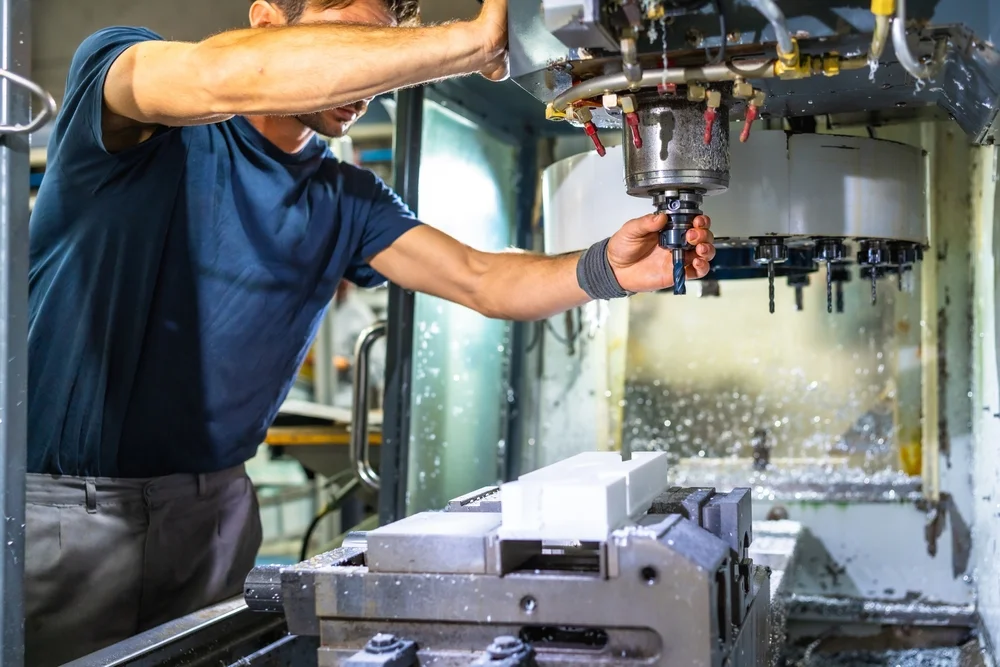
Your machine either helps your pattern or fights it, and the difference is often one small setup step or one small habit at the sticks. A head that enters with the right door angle and a rotor that lives near its efficient speed will cut with a soft hand and a steady line, while a head that arrives with a crowded door and a rotor at the edge of relief will turn every pass into a series of stalls and hot minutes.
Build a pre start rhythm that lives with your pattern, write your bite and overlap in the cab, then add a door setting and a discharge note so the first pass looks like the tenth. In mid shift, run a short cleanout and a quick sight of the latches and curtains, then check your log for temperature trends, not just numbers, because the rise rate tells the truth about airflow and load.
When the site or the stand changes, update the small rules so the pattern still holds, and make those changes visible in the cab so the next operator continues the plan rather than guessing at it.
Rotor speed, door settings, and chip control
Rotor speed should be set where the head makes clean chips without asking the engine to live near relief, because a steady stream means you found the mix of speed and bite that makes work rather than heat. If the stream lifts or thins, reduce bite before you touch speed, and if the door begins to crowd, open your angle and shorten the row so chips fall down and forward, not out. Between rows, sight the curtains and latch, then clear the lip where strings pack, because a minute here saves five in the next entry. Keep your eyes on chip behavior as much as on gauges, because chips that arc wide or lose cohesion are telling you to trim bite or to reset your door.
Make these controls part of your row entry ritual, and they will stop being decisions you wrestle with and start being habits that match your pattern. If the machine gives you simple presets or repeatable notes on the dash, use them to hold your settings from row to row, and if it does not, write them down where you can see them. Where public edges or water routes intersect your pass, keep the throw short and angle the head inward, not because it looks neat, but because it stops rework when you drive past that edge for the return. When discharge is quiet and the stream falls where you plan, the rest of the row feels like a rhythm you can hold all day.
Before a long block, set a few small rules that match your pattern and write them where you can see them:
- et rotor speed at your efficient target, then manage bite to keep the stream smooth, not the other way around
- choose a door angle that holds chips down inside your lane, increase only when you need reach in clean open ground
- if the stream lifts or wanders, pause at the end of the row and reset angle and bite before the next entry
These rules turn operator feel into a plan that repeats and into fuel that makes chips rather than heat.
Logging, data, and crew training inside the pattern
Data turns a pattern from an art into a program you can teach, because it tells you which moves produce acres and which moves produce heat. Keep a simple log in the cab with four lines for each block, bite setting, overlap rule, door angle, and a two number temperature note, and add one line for anything that changed a lot during the shift.
At the end of the day, ask each operator to write one sentence about what slowed them and one sentence about what made the row smooth, then take a photo of one clean row and one problem patch for the next morning brief. This takes three minutes and saves thirty next shift, because the next operator starts where the last one learned, not where the manual guesses.
Training should use the same pattern language your plan uses, not new terms, because clarity is what makes a move repeat. If you bring in a new crew member, put them on a short pocket with a clear starting edge and a short return, then stand where they can see your hand signals for bite and overlap, and show them the chip stream you want. After three short rows, ask them to write the rule you gave them in their own words, then hand them a clean row photo that shows the finish you expect. When you teach from the pattern, not from a list of parts, the crew learns how to move the acres, and the machine begins to feel like a partner rather than a puzzle they cannot solve.
Pit stops and mid shift checks that protect the pattern
A pattern that holds for eight hours depends on five minute pit stops that restore airflow, confirm discharge control, and correct small drift in tension or angle before it becomes a problem. Schedule a first cleanout while the air is still cool, not after the gauge climbs, and use that stop to glance at the screens, to pull packed strings from the lip and around bearing faces, and to touch the case line so you know it is warm and not hot. At mid shift, pick a row end with room to work, shut down, blow the pack gently so fibers fall clear of the cores, then sight the curtains and latches and torque one fastener you can reach with field tools, because the feel of that torque tells you if vibration has started to loosen hardware.
These small stops add minutes but they save an hour, because they keep your pattern from breaking under the weight of heat and debris. When a site has public edges or a road interface, use the pit stop to check the throw near those edges, because a small change in wind may have shifted the stream toward a buffer you cannot see from the seat. If the bite feels heavier and the stream looks ragged after lunch, drop one step on bite for one pass, then review your numbers at the row end, because a quick reset helps the machine find its rhythm again without you forcing it through clumps that will cost you time on the next pass.
Get a cutting pattern plan for your next site
Pattern work scales when it is written and shared, not when it lives in one operator’s head, and the fastest way to lock a site rhythm is a one page plan that your crew can pin to the cab and follow without debate.
We build that plan around your rows, your edges, and your returns, we include a baseline bite, a default overlap, a door angle for public edges, and a short rule for when to reset on slopes, and we map staging so trucks and loaders never block the next entry.
If you need pattern rules that match corridors, parks, or defense lines, we will use examples from crews who live on those jobs, adapt them to your lanes and buffers, and deliver a sheet that fits the way your team already moves. When you want direct help tuning a site you are about to cut, you can contact the team and we will turn your map and your goals into a clear pattern that hands you clean acres with less heat and fewer passes.
